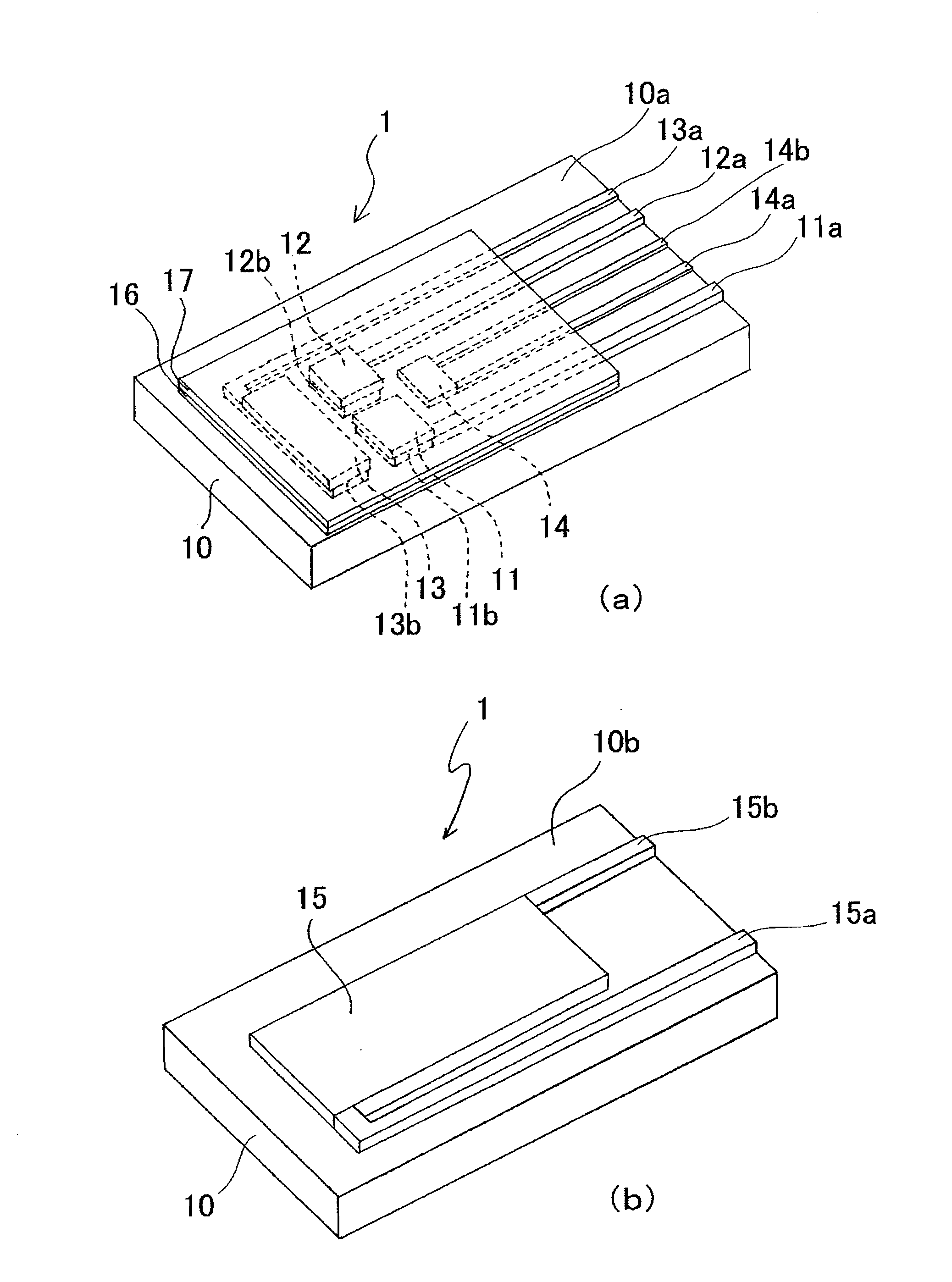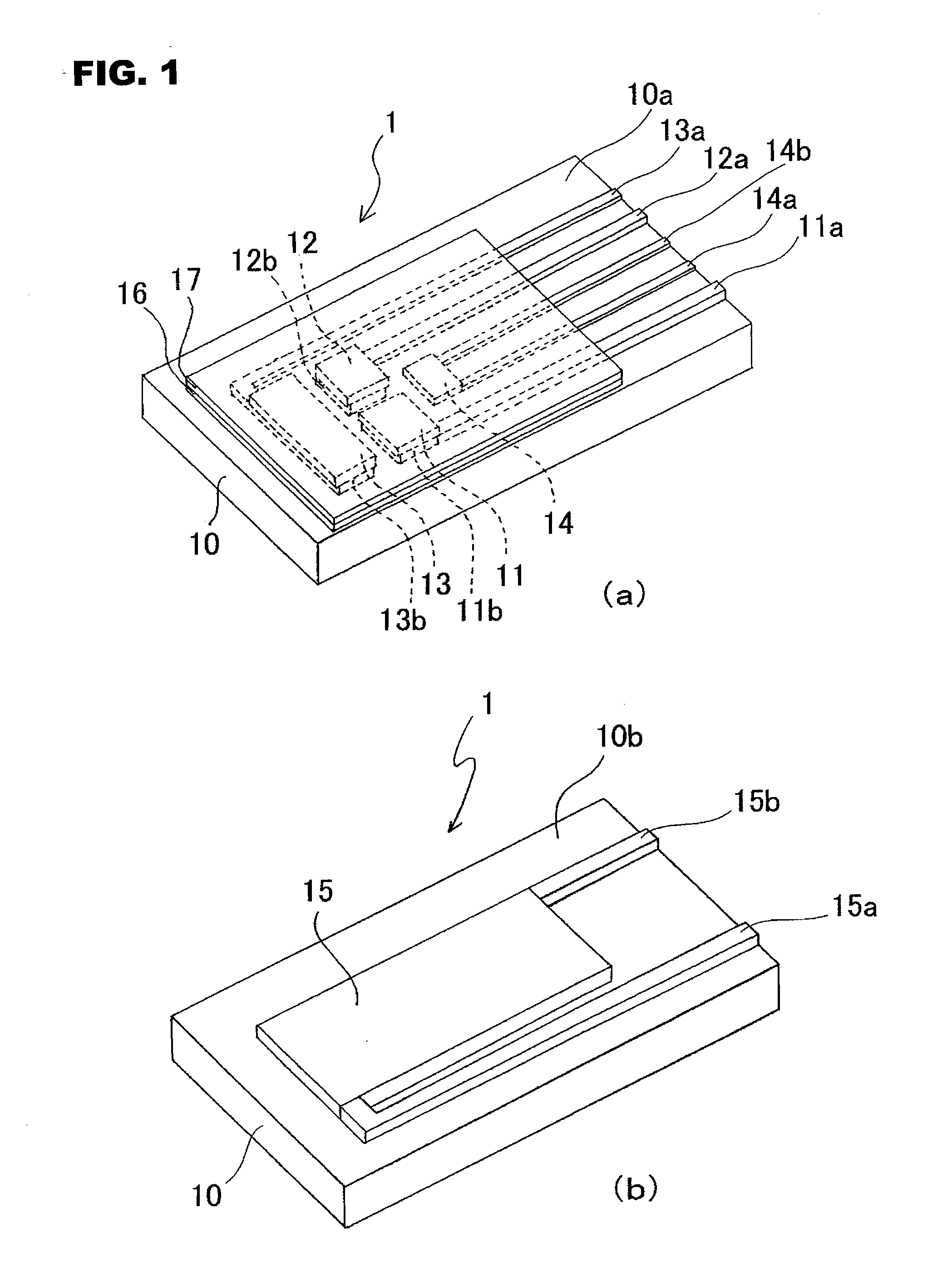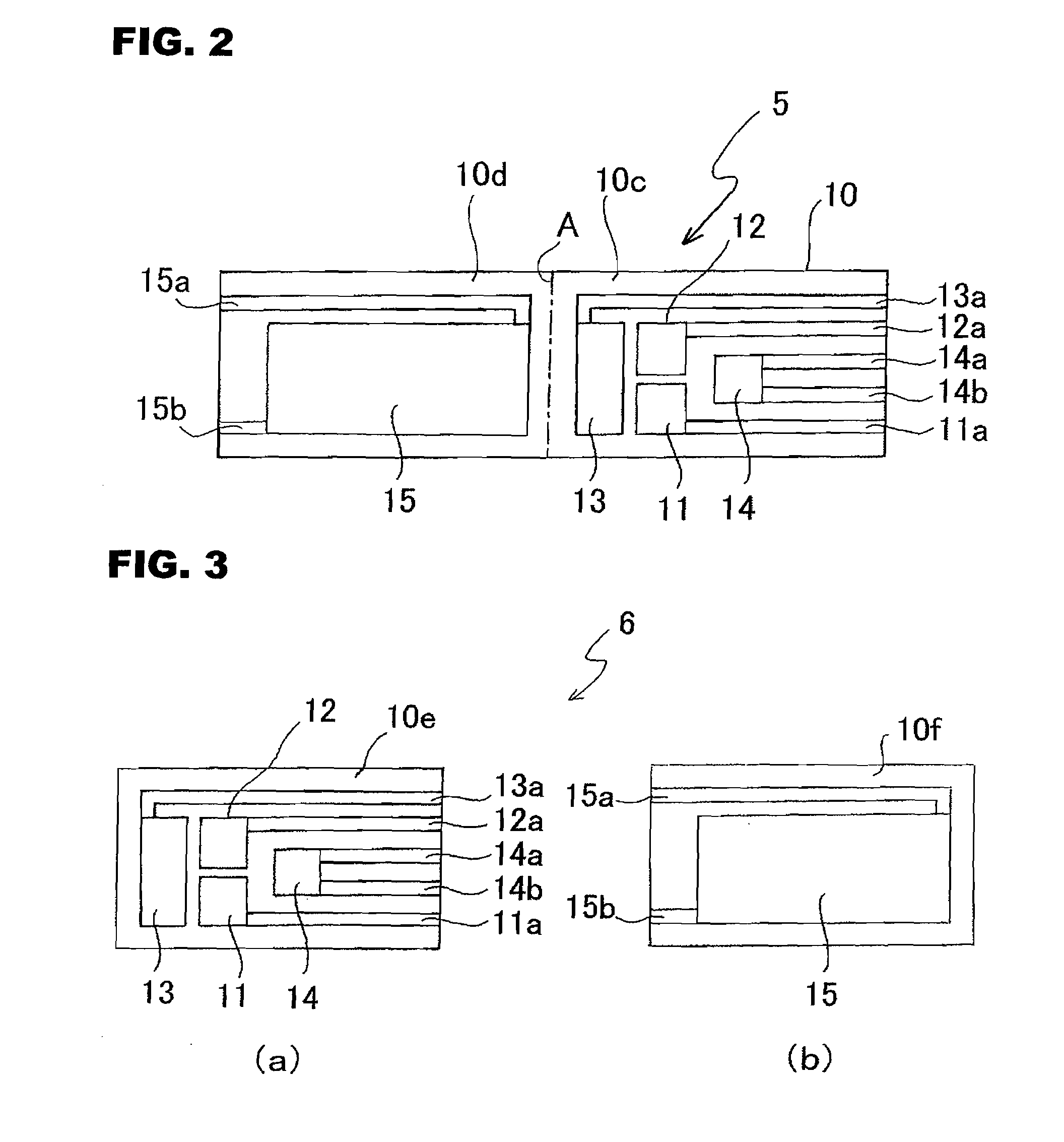Biosensor and Biosensor Cell
a biosensor and cell technology, applied in the field of biosensors and biosensor cells, can solve the problems of large and complex devices for maintaining the temperature of incubators, reducing the measurement accuracy of biosensors, and extending the preparation time, so as to achieve easy temperature adjustment of sample solution or the like in the sample chamber, short period of time, and simple structure
- Summary
- Abstract
- Description
- Claims
- Application Information
AI Technical Summary
Benefits of technology
Problems solved by technology
Method used
Image
Examples
embodiment 1
[0088]Polyethylene was molded into a plate of length 40 mm, width 8.5 mm, and thickness 0.5 mm to form the supporting layer 10. Next, in the pattern shown in FIG. 1, the wires 11a, 12a, 13a, 14a, 14b, 15a, and 15b of thickness 10 μm, and ground layers 11b, 12b, and 13b of thickness 10 μm were screen printed onto one surface of the supporting layer 10 using a silver paste with a polyester resin as a base. The width of each wire was 250 μm. The ground layer 11b had a length of 2.5 mm, width of 2.5 mm, and thickness of 10 μm. The ground layer 12b had a length of 0.7 mm, width of 0.7 mm, and thickness of 10 μm. The ground layer 13b had a length of 9.5 mm, width of 2.5 mm, and thickness of 10 μm.
[0089]Next, using a carbon paste with a mixture of a polyurethane resin and vinyl chloride resin as a base, the working electrode layer 12 and the counter electrode layer 13 were formed on top of the ground layers 12b and 13b by screen printing, and the heater member 15 was also formed by screen ...
PUM
| Property | Measurement | Unit |
|---|---|---|
| Temperature | aaaaa | aaaaa |
Abstract
Description
Claims
Application Information
 Login to View More
Login to View More - R&D
- Intellectual Property
- Life Sciences
- Materials
- Tech Scout
- Unparalleled Data Quality
- Higher Quality Content
- 60% Fewer Hallucinations
Browse by: Latest US Patents, China's latest patents, Technical Efficacy Thesaurus, Application Domain, Technology Topic, Popular Technical Reports.
© 2025 PatSnap. All rights reserved.Legal|Privacy policy|Modern Slavery Act Transparency Statement|Sitemap|About US| Contact US: help@patsnap.com



